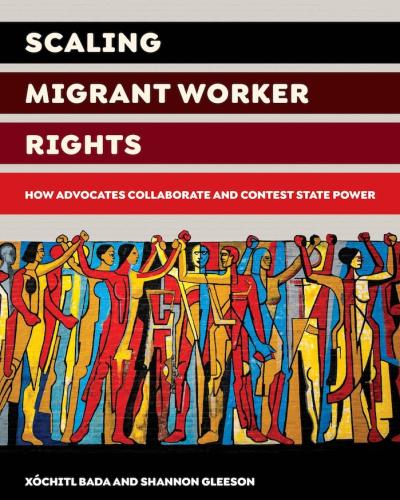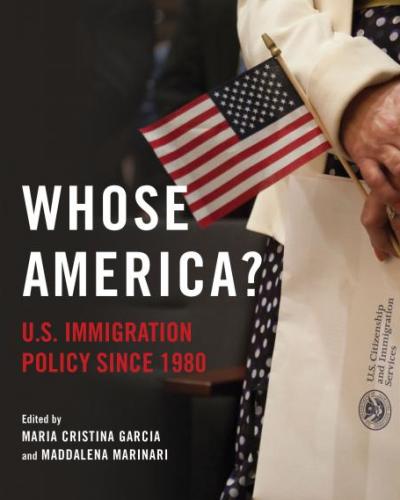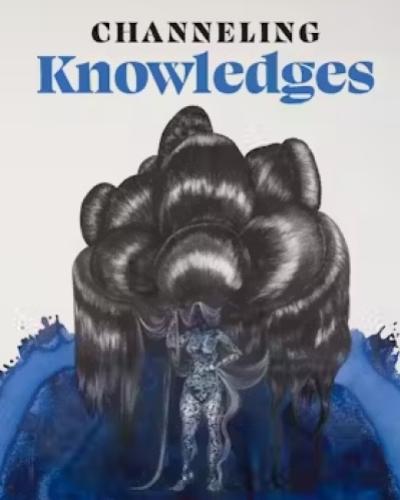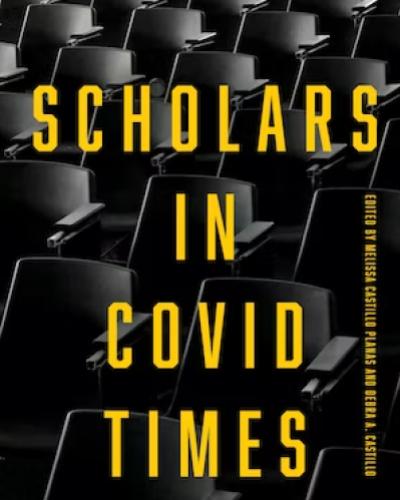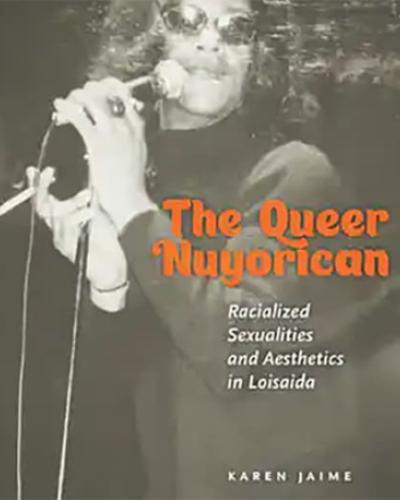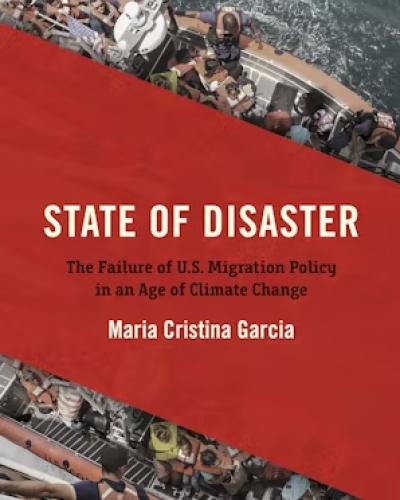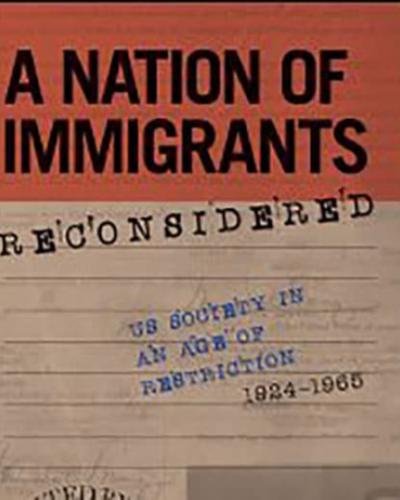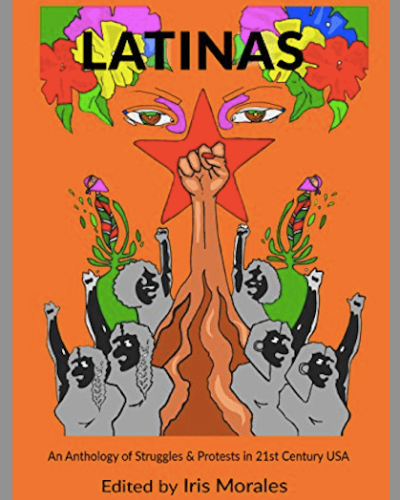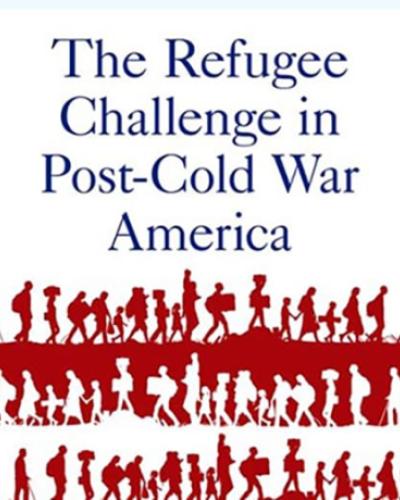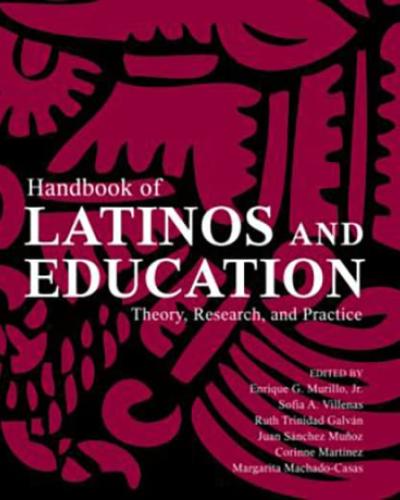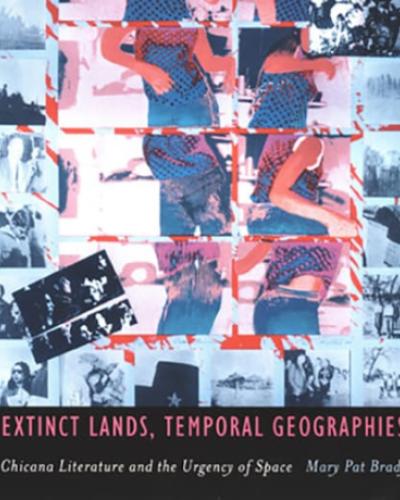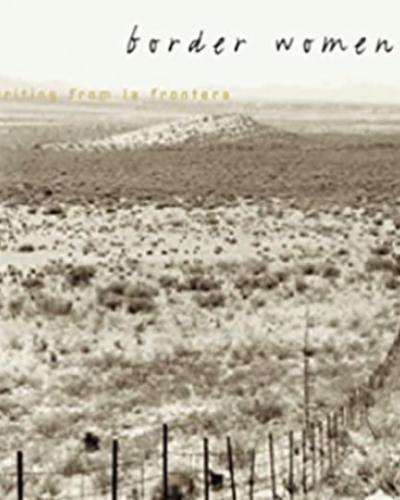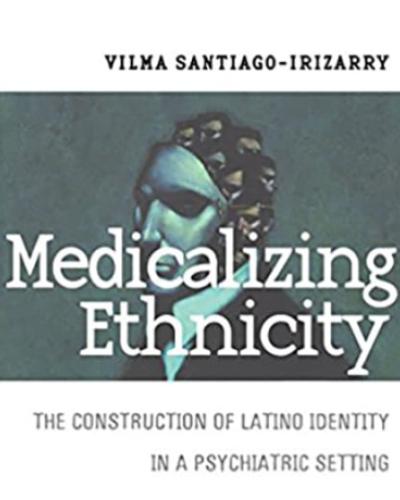An African American and Latinx History of the United States
An intersectional history of the shared struggle for African American and Latinx civil rights
Spanning more than two hundred years, An African American and Latinx History of the United States is a revolutionary, politically charged narrative history, arguing that the “Global South” was crucial to the development of America as we know it. Scholar and activist Paul Ortiz challenges the notion of westward progress as exalted by widely taught formulations like “manifest destiny” and “Jacksonian democracy,” and shows how placing African American, Latinx, and Indigenous voices unapologetically front and center transforms US history into one of the working class organizing against imperialism.
Drawing on rich narratives and primary source documents, Ortiz links racial segregation in the Southwest and the rise and violent fall of a powerful tradition of Mexican labor organizing in the twentieth century, to May 1, 2006, known as International Workers’ Day, when migrant laborers—Chicana/os, Afrocubanos, and immigrants from every continent on earth—united in resistance on the first “Day Without Immigrants.” As African American civil rights activists fought Jim Crow laws and Mexican labor organizers warred against the suffocating grip of capitalism, Black and Spanish-language newspapers, abolitionists, and Latin American revolutionaries coalesced around movements built between people from the United States and people from Central America and the Caribbean. In stark contrast to the resurgence of “America First” rhetoric, Black and Latinx intellectuals and organizers today have historically urged the United States to build bridges of solidarity with the nations of the Americas.
Incisive and timely, this bottom-up history, told from the interconnected vantage points of Latinx and African Americans, reveals the radically different ways that people of the diaspora have addressed issues still plaguing the United States today, and it offers a way forward in the continued struggle for universal civil rights.
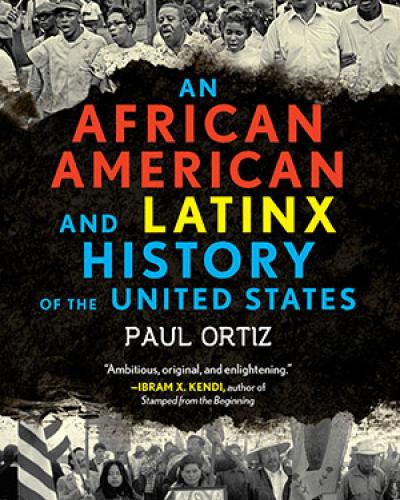
Scaling Migrant Worker Rights
As international migration continues to rise, sending states play an integral part in "managing" their diasporas, in some cases even stepping in to protect their citizens' labor and human rights in receiving states. At the same time, meso-level institutions—including labor unions, worker centers, legal aid groups, and other immigrant advocates—are among the most visible actors holding governments of immigrant destinations accountable at the local level. The potential for a functional immigrant worker rights regime, therefore, advocates to imagine a portable, universal system of justice and human rights, while simultaneously leaning on the bureaucratic minutiae of local enforcement. Taking Mexico and the United States as entry points, Scaling Migrant Worker Rights analyzes how an array of organizations put tactical pressure on government bureaucracies to holistically defend migrant rights. The result is a nuanced, multilayered picture of the impediments to and potential realization of migrant worker rights.
Whose America? U.S. Immigration Policy since 1980
A centerpiece of contemporary politics, draconian immigration policies have been long in the making. Maria Cristina Garcia and Maddalena Marinari edit works that examine the post-1980 response of legislation and policy to issues like undocumented immigration, economic shifts, national security, and human rights. Contributors engage with a wide range of ideas, including the effect of the Illegal Immigration Reform and Immigrant Responsibility Act and other laws on the flow of migrants and forms of entry; the impact of neoliberalism and post-Cold War political realignment; the complexities of policing and border enforcement; and the experiences of immigrant groups in communities across the United States.
Up-to-date yet rooted in history, Whose America? provides a sophisticated account of recent immigration policy while mapping the ideological struggle to answer an essential question: which people have the right to make America their home or refuge?
Contributors: Leisy Abrego, Carl Bon Tempo, Julio Capo, Jr., Carly Goodman, Julia Rose Kraut, Monique Laney, Carl Lindskoog, Yael Schacher, and Elliott Young
Channeling Knowledges
Water is often tasked with upholding division through the imposition of geopolitical borders. We see this in the construction of the Rio Grande/Río Bravo on the US-Mexico border, as well as in how the Caribbean Sea and the Pacific Ocean are used to delineate the limits of US territory. In stark contrast to this divisive view, Afro-diasporic religions conceive of water as a place of connection; it is where spiritual entities and ancestors reside, and where knowledge awaits.
Departing from the premise that water encourages confluence through the sustainment of contradiction, Channeling Knowledges fathoms water's depth and breadth in the work of Latinx and Caribbean creators such as Mayra Santos-Febres, Rita Indiana, Gloria Evangelina Anzaldúa, and the Border of Lights collective. Combining methodologies from literary studies, anthropology, history, and religious studies, Rebeca L. Hey-Colón's interdisciplinary study traces how Latinx and Caribbean cultural production draws on systems of Afro-diasporic worship—Haitian Vodou, La 21 División (Dominican Vodou), and Santería/Regla de Ocha—to channel the power of water, both salty and sweet, in sustaining connections between past, present, and not-yet-imagined futures.
Scholars in COVID Times
Scholars in COVID Times documents the new and innovative forms of scholarship, community collaboration, and teaching brought about by the COVID-19 pandemic. In this volume, Melissa Castillo Planas and Debra A. Castillo bring together a diverse range of texts, from research-based studies to self-reflective essays, to reexamine what it means to be a publicly engaged scholar in the era of COVID.
Between social distancing, masking, and remote teaching—along with the devastating physical and emotional tolls on individuals and families—the disruption of COVID-19 in academia has given motivated scholars an opportunity (or necessitated them) to reconsider how they interact with and inspire students, conduct research, and continue collaborative projects. Addressing a broad range of factors, from anti-Asian racism to pedagogies of resilience and escapism, digital pen pals to international performance, the essays are connected by a flexible, creative approach to community engagement as a core aspect of research and teaching. Timely and urgent, but with long-term implications and applications, Scholars in COVID Times offers a heterogeneous vision of scholarly and pedagogical innovation in an era of contestation and crisis.
The Queer Nuyorican
A queer genealogy of the famous performance space and the nuyorican aesthetic
One could easily overlook the Nuyorican Poets Cafe, a small, unassuming performance venue on New York City’s Lower East Side. Yet the space once hosted the likes of Victor Hernández Cruz, Allen Ginsberg, and Amiri Baraka and is widely credited as the homespace for the emergent nuyorican literary and aesthetic movement of the 1990s. Founded by a group of counterculturalist Puerto Rican immigrants and artists in the 1970s, the space slowly transformed the Puerto Rican ethnic and cultural associations of the epithet “Nuyorican,” as the Cafe developed into a central hub for an artistic movement encompassing queer, trans, and diasporic performance.
The Queer Nuyorican is the first queer genealogy and critical study of the historical, political, and cultural conditions under which the term “Nuyorican” shifted from a raced/ethnic identity marker to “nuyorican,” an aesthetic practice. The nuyorican aesthetic recognizes and includes queer poets and performers of color whose writing and performance build upon the politics inherent in the Cafe’s founding. Initially situated within the Cafe’s physical space and countercultural discursive history, the nuyorican aesthetic extends beyond these gendered and ethnic boundaries, broadening the ethnic marker Nuyorican to include queer, trans, and diasporic performance modalities.
Hip-hop studies, alongside critical race, queer, literary, and performance theories, are used to document the interventions made by queer and trans artists of color—Miguel Piñero, Regie Cabico, Glam Slam participants, and Ellison Glenn/Black Cracker—whose works demonstrate how the Nuyorican Poets Cafe has operated as a queer space since its founding. In focusing on artists who began their careers as spoken word artists and slam poets at the Cafe, The Queer Nuyorican examines queer modes of circulation that are tethered to the increasing visibility, commodification, and normalization of spoken word, slam poetry, and hip-hop theater in the United States and abroad.
State of Disaster: The Failure of U.S. Migration Policy in an Age of Climate Change
Natural disasters and the dire effects of climate change cause massive population displacements and lead to some of the most intractable political and humanitarian challenges seen today. Yet, as Maria Cristina Garcia observes in this critical history of U.S. policy on migration in the Global South, there is actually no such thing as a "climate refugee" under current U.S. law. Most initiatives intended to assist those who must migrate are flawed and ineffective from inception because they are derived from outmoded policies. In a world of climate change, U.S. refugee policy simply does not work.
Garcia focuses on Central America and the Caribbean, where natural disasters have repeatedly worsened poverty, inequality, and domestic and international political tensions. She explains that the creation of better U.S. policy for those escaping disasters is severely limited by the 1980 Refugee Act, which continues to be applied almost exclusively for reasons of persecution directly related to politics, race, religion, and identity. Garcia contends that the United States must transform its outdated migration policies to address today's realities. Climate change and natural disasters are here to stay, and much of the human devastation left in their wake is essentially a policy choice.
A Nation of Immigrants Reconsidered US Society in an Age of Restriction, 1924-1965
Maria Cristina Garcia co-edited the publication, A Nation of Immigrants Reconsidered, with Maddalena Marinari assistant professor of history at Gustavus Adolphus College and Madeline Y. Hsu professor of history at the University of Texas at Austin.
In A Nation of Immigrants Reconsidered, leading scholars of immigration explore how the political and ideological struggles of the "age of restriction"--from 1924 to 1965--paved the way for the changes to come. The essays examine how geopolitics, civil rights, perceptions of America's role as a humanitarian sanctuary, and economic priorities led government officials to facilitate the entrance of specific immigrant groups, thereby establishing the legal precedents for future policies. Eye-opening articles discuss Japanese war brides and changing views of miscegenation, the recruitment of former Nazi scientists, a temporary workers program with Japanese immigrants, the emotional separation of Mexican immigrant families, Puerto Rican youth’s efforts to claim an American identity, and the restaurant raids of conscripted Chinese sailors during World War II.
LATINAS: Struggles & Protests in 21st Century USA
Karen Jaime, Professor of Latina/o Studies and Performing and Media Arts at Cornell University, poetry was published in the anthology, “Latinas: Struggles & Protests in 21st Century USA”, edited by longtime activist Iris Morales. The anthology illustrates how Latinas understand the gendered conditions of their lives and discuss inequities faced as women and also by class, race, ethnicity, national origin, and immigration status.
The Refugee Challenge in Post-Cold War America
Maria Cristina Garcia has published The Refugee Challenge in Post-Cold War America (Oxford University Press). Alan M. Kraut, past president of the Organization of American Historians, states that “This volume stands alone as the best history of U.S. refugee policy in post-Cold War America. Garcia chronicles the struggles of Russian refuseniks, Chinese dissidents, Rwandans fleeing genocide, as well as Haitian and Cuban boat people among those seeking sanctuary from persecution. Her meticulous research and incisive analysis illuminates the confusions and inadequacies of United States refugee policy under Republican and Democratic presidents alike.” Carl Bon Tempos, author of Americans at the Gate, states that “This book deftly explains how domestic politics, economic circumstances, and national security concerns have shaped what the United States has done –and not done- in the face of multiple refugee crises in the two decades after the end of the Cold War’. He describes her book as “masterful and elegant”.
A New Approach to Migrant Labor Rights Enforcement: The Crisis of Undocumented Worker Abuse and Mexican Consular Advocacy in the United States
This paper offers a critical assessment of one of the clearest examples of transnational labor advocacy through diplomatic institutions: the role of the Mexican consulate in supporting labor rights enforcement in the United States. The Mexican immigrant population is the largest national origin group in the United States today, comprising nearly a third of all immigrants and the majority of the undocumented (Passel and Cohn 2009). While immigrants from Mexico have a long history of labor migration to the United States, and have tended to settle in traditional immigrant destination states in the Southwest, they are increasingly moving to “new destinations” in the South and Midwest (Batalova 2008). Mexican migrants have become structurally embedded into the economic structure of the U.S. labor market (Cornelius 1998) and created transnational social networks that continue to facilitate a culture of migration in many sending communities (Adler Hellman 2008; Smith 2006; Stephen 2007). Many Mexican migrants are recently arrived, have low levels of human capital, and are limited English proficient. Mexican migrants are often concentrated in “bad jobs” (Kalleberg 2011), characterized by low pay, few benefits, high levels of workplace violation, and little government oversight (Bernhardt et al. 2008).
Handbook of Latinos and Education: Theory, Research, and Practice
Providing a comprehensive review of rigorous, innovative, and critical scholarship relevant to educational issues which impact Latinos, this Handbook captures the field at this point in time. Its unique purpose and function is to profile the scope and terrain of academic inquiry on Latinos and education. Presenting the most significant and potentially influential work in the field in terms of its contributions to research, to professional practice, and to the emergence of related interdisciplinary studies and theory, the volume is organized around five themes:
- history, theory, and methodology
- policies and politics
- language and culture
- teaching and learning
- resources and information.
Centro, Journal of the Center for Puerto Rican Studies states that "This edited volume is a very extensive and detailed compilation of historical and current scholarship about the education of Latinos in the United States. The list of nearly one hundred contributors reads like a 'Who’s Who' in the field of Latino studies in general, and Latino education in particular.
Extinct Lands, Temporal Geographies: Chicana Literature and the Urgency of Space
A train station becomes a police station; lands held sacred by Apaches and Mexicanos are turned into commercial and residential zones; freeway construction hollows out a community; a rancho becomes a retirement community—these are the kinds of spatial transformations that concern Mary Pat Brady in Extinct Lands, Temporal Geographies, a book bringing together Chicana feminism, cultural geography, and literary theory to analyze an unusual mix of Chicana texts through the concept of space. Beginning with nineteenth-century short stories and essays and concluding with contemporary fiction, this book reveals how Chicana literature offers a valuable theoretics of space.
Rafael Pérez-Torres, author of Movements in Chicano Poetry: Against Myths, Against Margins states that "Extinct Lands, Temporal Geographies is an outstanding work that reveals the connection between Chicana bodies, literary texts, and geopolitical space. It offers a conceptual framework based on theories of spatialization that provide a greater understanding of what Chicana writing does and why it is significant to our understanding of contemporary U.S. culture. Nobody else does what Mary Pat Brady does so well here."
Border Women: Writing from La Frontera
Border Women rethinks border theory by emphasizing women writers whose work—in Spanish, English, or a mixture of the two languages—calls into question accepted notions of border identities. These writers include those who are already well recognized internationally (Helena María Viramontes, Sheila and Sandra Ortiz Taylor, and María Novaro); those who have become part of the Chicano canon (Norma Cantú, Alicia Gaspar de Alba, and Demetria Martínez); along with some of the lesser-known, yet most exciting, women’s voices from the Mexican border (Rosario Sanmiguel, Rosina Conde, and Regina Swain).
South Central Review states that Border Women is a significant contribution to U.S.-Mexico border studies, and to gender studies as well. It places emphasis on the cultural richness of the border region through the reading of the original and provocative voices of its women.
Medicalizing Ethnicity: The Construction of Latino Identity in a Psychiatric Setting
In Medicalizing Ethnicity, Vilma Santiago-Irizarry shows how commendable intentions can produce unintended consequences. Santiago-Irizarry conducted ethnographic fieldwork in three bilingual, bicultural psychiatric programs for Latino patients at public mental health facilities in New York City. The introduction of "cultural sensitivity" in mental health clinics, she concludes, led doctors to construct essentialized, composite versions of Latino ethnicity in their drive to treat mental illness with sensitivity.
The author demonstrates that stressing Latino differences when dealing with patients resulted not in empowerment, as intended, but in the reassertion of Anglo-American standards of behavior in the guise of psychiatric categories by which Latino culture was negatively defined. For instance, doctors routinely translated their patients' beliefs in the Latino religious traditions of espiritismo and Santería into psychiatric terms, thus treating these beliefs as pathologies.
Noorfarah Merali, University of Alberta. Journal of International Migration and Integration states that "The major strength of this book is the high level of critical analysis demonstrated by the application of an anthropological perspective to the field of mental health. . . . This book represents an important contribution to the conceptualization and incorporation of culture in the field of mental health."

